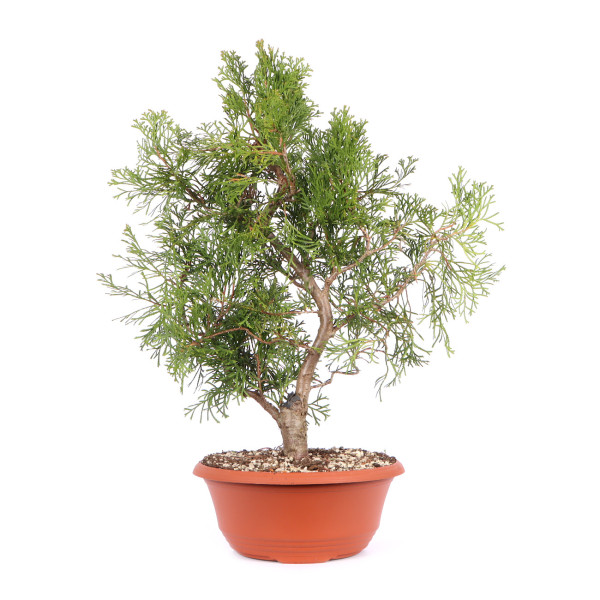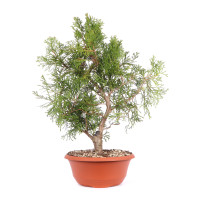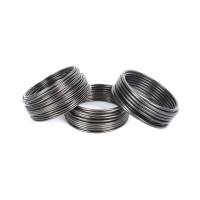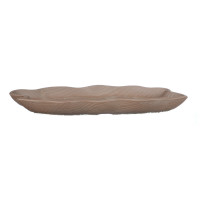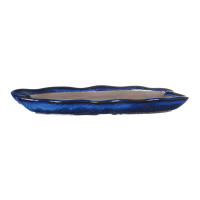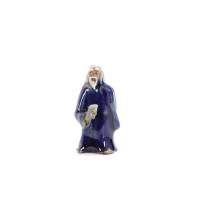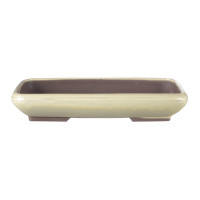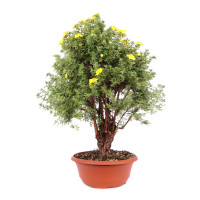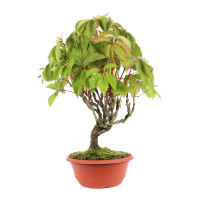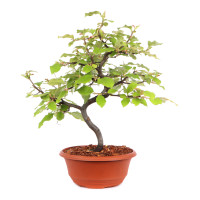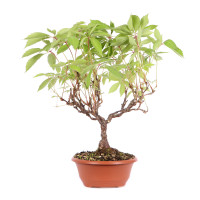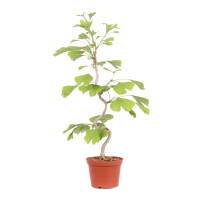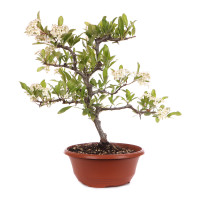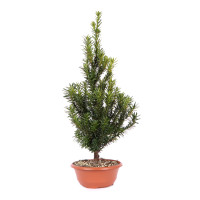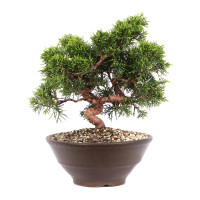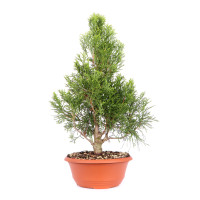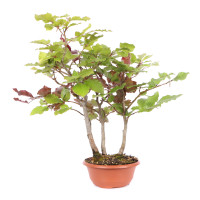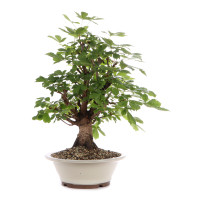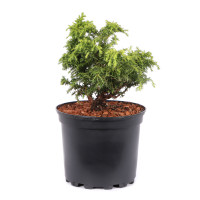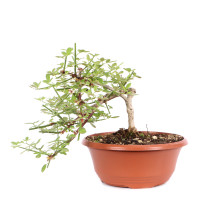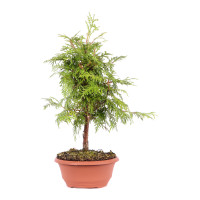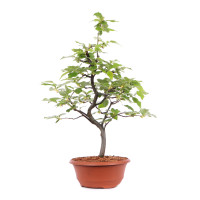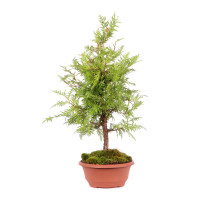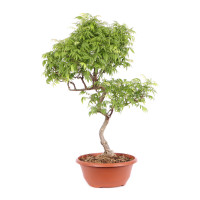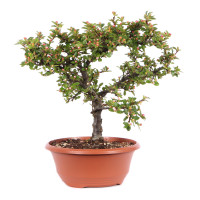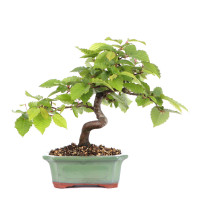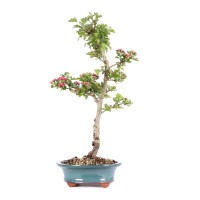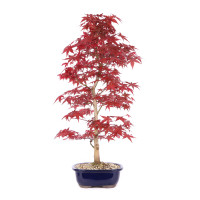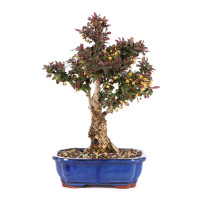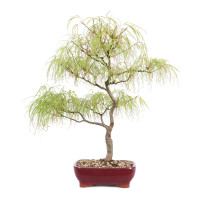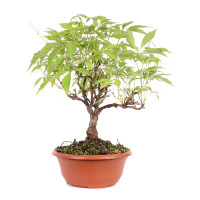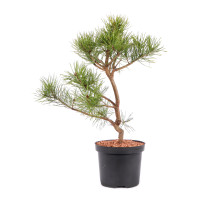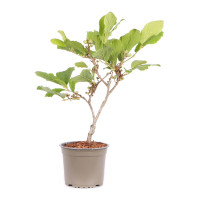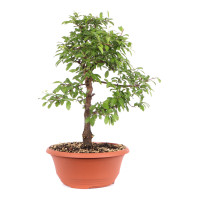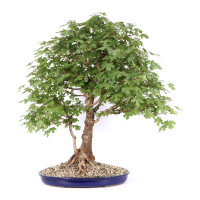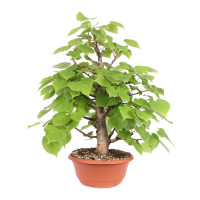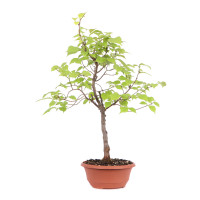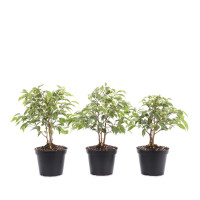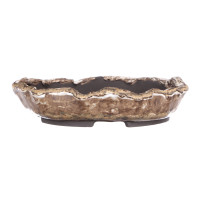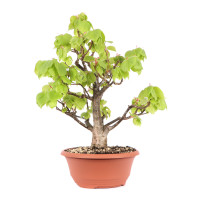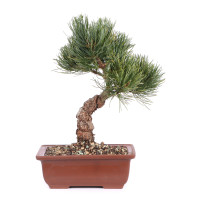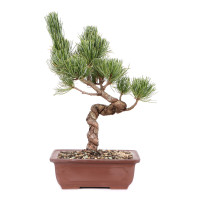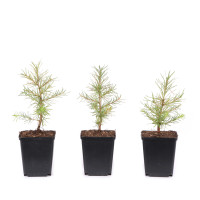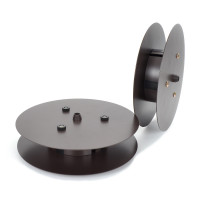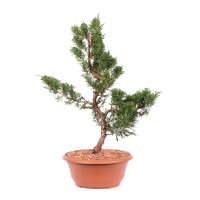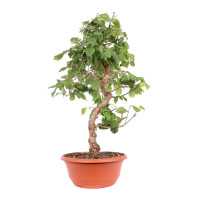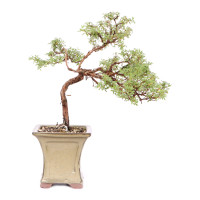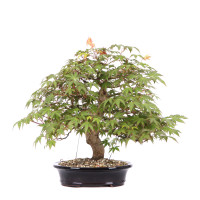- Order number: 1826-P-24-0962
- Height: 60 cm (incl. pot)
- Foliage: evergreen
- Bonsai Pot: plastic pot
- Year: 2017
- Origin: Germany
Thuja occidentalis ‘Smaragd‘ - Northern White-Cedar ‘Smaragd‘
General:
The northern white-cedar originally comes from North America and was introduced to Europe as early as 1536. In its homeland, the northern white-cedar grows in damp forests as an evergreen tree with a height of up to 20 meters. It forms a narrow and conical crown and can live for over 1500 years. The scale-shaped, fresh green leaves are close together and turn slightly reddish brown in autumn. The bark also turns reddish brown with age and loosens in narrow strips. Unfortunately, the northern white-cedar in Europe is mostly only known as a uniform hedge plant.
Care as a bonsai:
The northern white-cedar is not often found as a bonsai. Due to its properties, it is very well suited for bonsai culture. When the Enger bonsai school was still a conventional tree nursery, the first attempts and experiences with bonsai design were made with northern white-cedars. The plant is very robust and resembles the Chinese juniper in terms of foliage and bark. Although not so fine leaf cushions can be built up, beautifully structured trees can still be formed. The branches are easy to wire and the foliage can be kept short and compact by cutting and plucking. The northern white-cedar is frost hardy, very vigorous and also sprouts out of the old wood. It also develops many fine roots and should therefore be repotted regularly. The plant prefers a bright location, whereby the root ball should not dry out.
Special features of the variety:
The ‘Smaragd‘ variety grows more compact and dense than the species.

